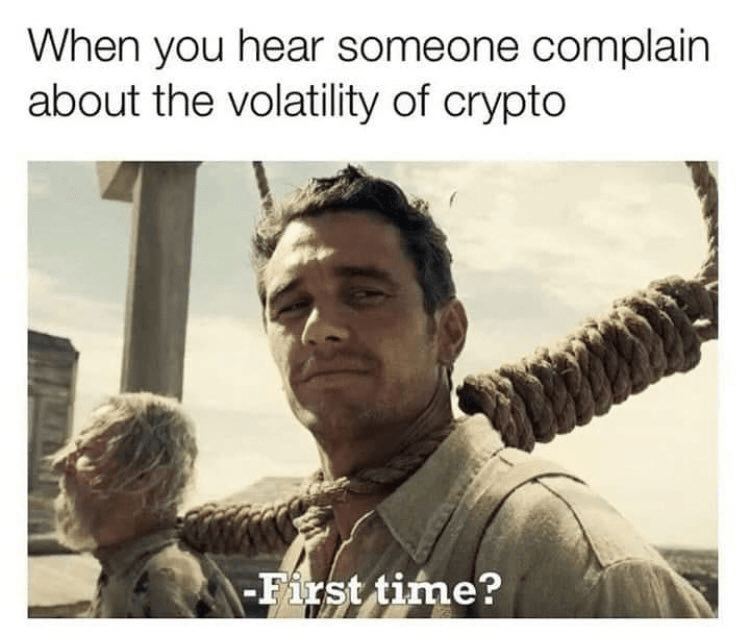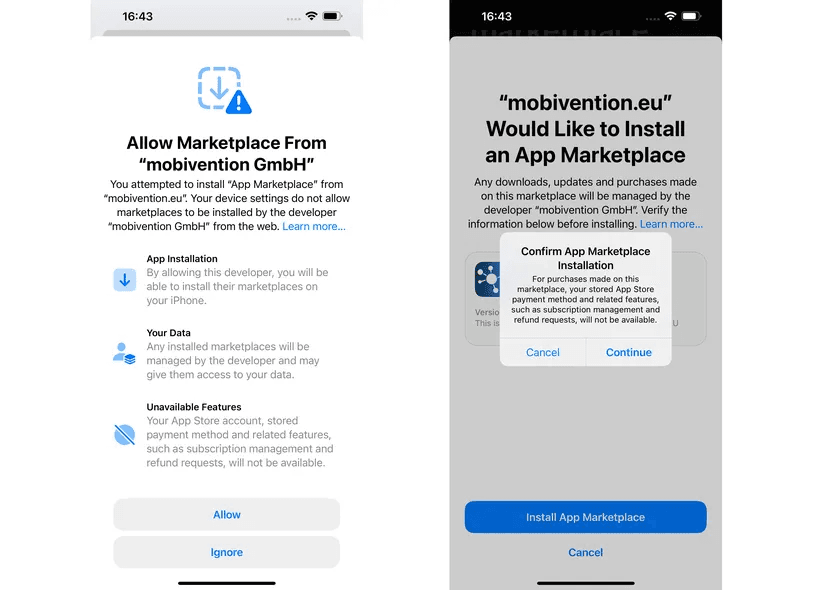Despite all the wars, earthquakes, natural disasters, and the unstable situation in the world, we still managed to monitor all the news for the week and release our digest. So what if our office shakes a bit? Who even pays attention to such trifles when there are assets worth $24 million held hostage in Solana’s locked protocol? Did you forget your couple of million anywhere?
From Paradigm’s ambitious venture fundraising efforts to the challenges and potential of third-party iOS app markets in Europe, we have collected the top of the top and are ready to share with you!
Locked Protocol on Solana Holds $24 Million Hostage
A whopping $24 million worth of Solana’s tokenized stake (stSOL) found themselves unwitting prisoners on the Lido liquid staking platform due to a malfunctioning smart contract, despite the program shuttering five months prior.
Lido on Solana, once a haven for users to stake any amount of Solana with a 5% yield, closed its doors in October 2023 due to shaky financials and low fees.
Until February, users had the luxury of canceling their Solana stake through a user-friendly interface, but that ship has sailed, leaving them with the only option of manually canceling their stake via Solana’s command-line interface (CLI).
Withdrawing Funds Turns into a Complex Task
Some users over on Discord have been airing their grievances, claiming the withdrawal process is akin to rocket science for the “uninitiated,” while others swear they’ve followed Lido’s instructions on Solana.
“I’ve been trying to unlock my StSOL for about a month now, but it’s still stuck in limbo with the validator and hasn’t returned to SOL, despite being [burned],” said user “Number9guy.”
Solscan data reveals that around $24 million worth of StSOL is still out there in the wild, held by 31,588 holders who are probably feeling more like hostages than investors at this point.
Smart Contract Troubles
Turns out, the problem might not be user error after all. In a Discord message dated March 30th, Pavel Pavlov, Product Manager at P2P Validator — the team once behind Lido on Solana — revealed that there’s an issue with the smart contract underpinning the withdrawal function.
It’s supposed to be related to changes in the fee-splitting logic. The current implementation uses a splitting function within the withdrawal process of the smart contract.
Pavlov added that while the issue has been identified, P2P is also “without levers to influence the situation,” and now they’re reaching out to Lido DAO to potentially tweak the smart contract.
In an update posted on the Lido Solana Discord page, Pavlov reported that the p2p team had successfully fixed and deployed the updated escort bot.
He added that stSOL can now be retrieved using CLI and advised users to refer to the official guide for further details.

Bitcoin’s Bullish Journey: Volatility and Halving
According to James Check, lead online analyst at Glassnode, the cryptocurrency bull market is about to enter its second and final phase, characterized by euphoria and wild price swings. He believes the bullish enthusiasm phase began in October 2023 and concluded after Bitcoin hit its all-time high in early March.

“We’re transitioning from an enthusiastic bullish sentiment, which, generally speaking, was below the historical peak, to a euphoric bull run,” he said in an interview.
Check stated that the next stage will be marked by people becoming “more and more nervous,” accompanied by higher volatility. “Increased Bitcoin coverage in the news will lead to higher demand,”
He noted that the current bull market has been one of the strongest in Bitcoin’s history, considering the smaller corrections throughout the rally.
Bitcoin Volatility Ahead of Halving
According to data tracked by Kaiko, the spread between the annual 30-day historical volatility of Bitcoin and Ether has soared to its highest level in at least a year. The influx of spot ETFs and the upcoming halving of the Bitcoin blockchain seem to have catalyzed greater volatility for BTC.

However, lately, Bitcoin has become more volatile than Ether (ETH). The annual 30-day historical or realized volatility of Bitcoin surged to almost 60% at the end of last week, surpassing Ether’s 30-day realized volatility by nearly 10 percentage points. This is the widest spread in at least a year. Historical volatility indicates the degree of price turbulence observed over a certain period.

The spread of volatility between Bitcoin and Ether turned positive a few weeks after the U.S. Securities and Exchange Commission (SEC) approved nearly a dozen spot Bitcoin exchange-traded funds (ETFs), allowing traders to access the cryptocurrency without owning it.
The upcoming halving of Bitcoin block rewards, an event occurring once every four years that reduces the issuance rate of BTC per block by 50%, may be another reason for the relatively higher cryptocurrency volatility.
Generally, the halving is seen as a bullish move as it halves the rate of supply expansion, creating a supply-demand imbalance in favor of price growth, assuming demand remains steady or strengthens.
Paradigm to Raise $850 Million for New Crypto Venture Fund
Venture firm Web3 Paradigm is in talks with investors to raise anywhere from $750 million to $850 million for a new investment vehicle. If it hits the $750 million mark, the fund will be the biggest since the crypto market crash back in May 2022, reports Bloomberg, citing sources familiar with the matter.
Back in November 2021, Paradigm set up a venture fund totaling $2.5 billion specifically for cryptocurrency companies and protocols. However, not all bets paid off, as by early 2022, the firm had invested a total of $278 million into the now-defunct cryptocurrency exchange FTX by Sam Bankman-Fried. Since then, Paradigm has reduced its investments in FTX to zero, according to a previous report by The Block.
Recently, Paradigm has been conducting numerous fundraises for crypto startups, including a $55 million financing round for the zero-knowledge proof startup Succinct Labs in mid-March and an $18 million Series A round for the web3 infrastructure startup Privy in November 2023.
The potential deal bodes well for the recovery of crypto market recovery. Should it reach the $750 million mark, it would stand as the largest fund since the tumultuous crypto crash of May 2022.
Challenges and Potentials of Third-Party App Marketplaces on iOS in Europe
Nearly a month after Apple reluctantly capitulation to the Digital Markets Act (DMA), only one third-party app store is currently operational in Europe for iOS. That’s Mobivention’s trade platform, catering to B2B needs, and allowing companies to distribute their own apps within the organization.
While announcements have been made regarding the Epic Games Store and MacPaw’s Setapp, it’s anticipated that AltStore will be the earliest to appear on the screens of EU users. Developed by Riley Testut, this new app store is a derivative of AltStore, an alternative to the App Store introduced in 2019, which notably does not necessitate users to jailbreak their devices. The new version of AltStore is currently under Apple’s scrutiny and will be ready to roll out once it gets the nod of approval from the tech giant.
Hurdles to Widespread Adoption of Third-Party Marketplaces
One reason why we aren’t seeing new app stores popping up left and right is because Apple is making it too darn pricey. For instance, its Core Technology Fee (CTF) demands developers to cough up 50 euro cents for every app installation exceeding 1 million. Third-party app store developers have to shell out CTF for every initial app store installation. In other words, every AltStore and Mobivention download sets their developers back by 50 euro cents — a fee that can quickly add up. Case in point, the current AltStore has been downloaded over a million times.
Another potential roadblock in the path to widespread adoption of third-party marketplaces is just how darn complicated it is: installing each store requires about a dozen screen interactions.
Here’s the rundown: you start by tapping a link in your browser to download the alternative store. From there, you get a pop-up informing you that your installation settings don’t allow for this developer’s marketplace. Then you dive into “Settings,” enable the marketplace, head back to the browser, tap the download link again, and get yet another prompt asking you to confirm the installation. Finally, you can open the store and peruse the available apps.

It’s not rocket science, but there are enough steps and scary-sounding language to annoy and act as a deterrent — especially when Apple’s App Store only requires a mere mouse click to launch.
Fortunately, installing third-party apps is a breeze. Both Mobivention and AltStore offer a process almost identical to the App Store: you hit the “install” button, and… voilà, it’s installed.
Perhaps, the biggest obstacle for the masses in transitioning to third-party marketplaces will be stepping out of the comforting embrace of the App Store. People have been downloading Apple apps since 2008. Whether it’s security, user privacy, app updates, fraud protection, or refunds, you can bet Apple has got it all under control in the App Store.
As we wrap up our digest, everyone is alive and well, except for the chief editor, who hasn’t responded to emails for three days straight. But who cares, right? We’re still putting out great material. While Solana deals with the aftermath of a smart contract malfunction, Bitcoin’s bullish journey faces the impending volatility of its halving phase.
Previous Digests:
- Digest 51: Coinbase’s Base Expansion, Nvidia’s AI Reign’s End, Hacker’s $63M Return & Near Protocol’s Chain Signatures
- Digest 50: Ether ETF Expectations Fade, SEC Faces Sanctions, Cardano Price Forecast & Meta Introduces Fediverse Threads
- Digest 49: EuroParl’s AI Legislation, MicroStrategy’s $500M Bitcoin Bet, and Meme Coins’ Network Bond
Meanwhile, Paradigm’s fundraising efforts underscore the growing interest and investments in the crypto space, and the emergence of third-party app marketplaces for iOS in Europe reflects the changing landscape of digital commerce. We bid you farewell until next week — don’t miss us too much!
Disclaimer: All materials on this site are for informational purposes only. None of the material should be interpreted as investment advice. Please note that despite the nature of much of the material created and hosted on this website, HODL FM is not a financial reference resource and the opinions of authors and other contributors are their own and should not be taken as financial advice. If you require advice of this sort, HODL FM strongly recommends contacting a qualified industry professional.





